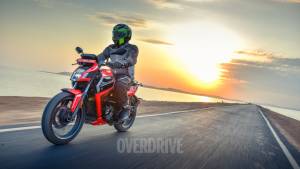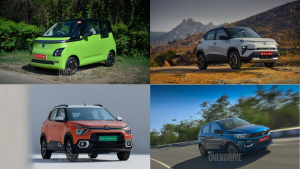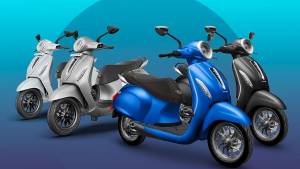Breaking the ice: Audi e-tron, Jaguar I-Pace, Mercedes EQC in the Himalayan winter
I've had a fair few years on the face of this planet, but I'm assuming that like many others in our vast, largely hot country, have never really seen snow in its natural setting. One of life's weird quirks but the wait was worth it, given that this time on our annual Winter Drive, I wasn't just breaking new ground for myself. We were also breaking new ground for EV road tripping in India.
Audi e-tron, Jaguar I-Pace, Mercedes EQC EV road trip plan
When we brought the Audi e-tron up to Leh last year, it was truly uncharted territory. We set up the necessary infrastructure as we went along, facing problems we've never encountered before on a familiar route and finding solutions, quite literally on the fly. But as difficult as it was, we did manage to meet our objectives. And since an OVERDRIVE Winter Drive story needs a cold, snow-strewn setting that celebrates the cars as much as the journey, a different challenge was necessary. So it only made sense to up the ante and bring all three of the established luxury EVs - the Audi e-tron, The Jaguar I-Pace and the Mercedes-Benz EQC - you can buy in India right now to the almost heavenly locales around Manali.
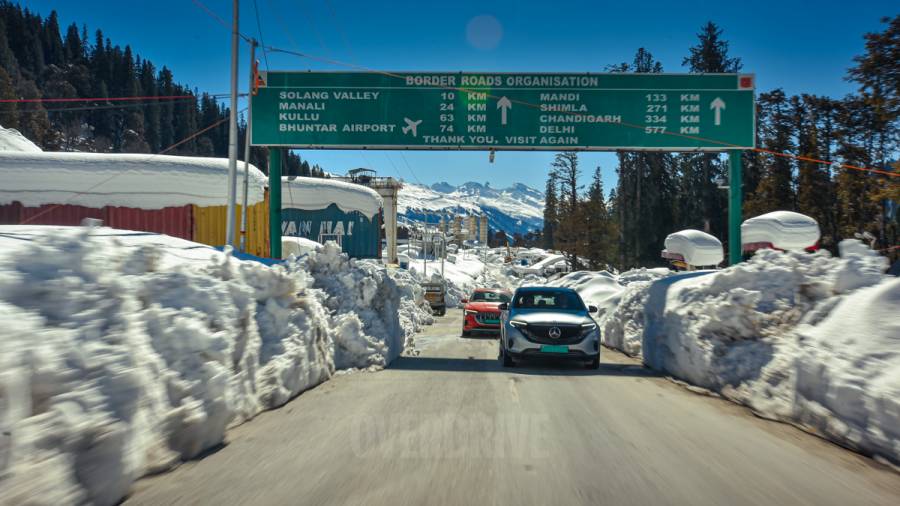
The route plan was fairly straightforward. Start from Chandigarh with the three electric SUVs fully topped up and head on to the newly set-up fast charger at Sundar Nagar at a comfortable 160 km away. Then do the toughest 134 km section up to The Himalayan in Manali where we would top up all three cars again before heading higher up looking for snow. On the face of it, easily doable even with a most conservative 250 to 300 km range estimate for all three cars, accounting for the largely uphill route.
Audi e-tron, Jaguar I-Pace, Mercedes EQC Chandigarh-Manali EV charging and infrastructure
After our experiences the last time around, it was imperative that we left Chandigarh with the three electric SUVs fully topped up. But it quickly became apparent that even though electric car sales have grown threefold over the past year in India, the charging infrastructure hasn't been able to keep up. Both in terms of its reach and organisation. Of course, this isn't as much a concern if you're charging at home for the daily commute, but road tripping across the country on leisure routes such as this one still needs significant research, planning and alternative options.
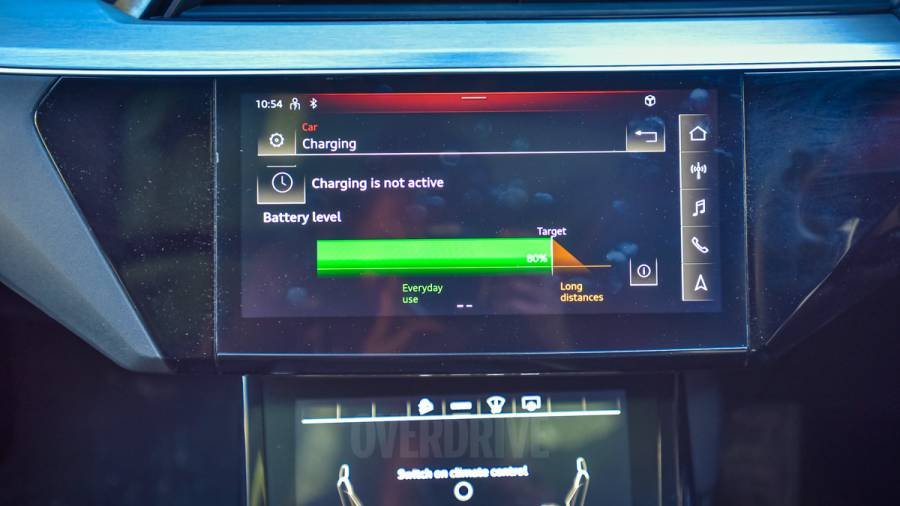
Topping up the EVs for the start of our trip wasn't a hassle, it must be said. The quick 60 kW DC charger at the Hareda office in Panchkula meant that the Jaguar I-Pace and Audi e-tron, which Rohit and Bert drove up from Delhi, took only about an hour each to fully charge up from the roughly 40 per cent charge state they were at. While the charging itself was quick, we wish the ElectreeFi app these EESL chargers need to function was better thought out. Oddly enough, you need to pay before you start charging and the menus and interface seem more focused on booking charge slots rather than service a quick, impromptu charge. But a great positive is that if do run into trouble with these chargers there are responsive helpline numbers to assist you.
But our plans were quite literally turned upside down halfway into our journey the next day. Leaving Chandigarh, we felt secure in knowing that our lunch and charging stop at the Suket Cafe with its 30 kW Statiq-operated DC fast charger would only amount to a three-hour halt. But as it turns out, a recent landslide had caused the set-up to be reinstalled. This process was botched and while the charger was online as per the Statiq app, a missing earthing plate meant that it couldn't supply electricity. Hours of calls and tinkering with the set-up yielded no results, something customers can't be expected to do, to begin with. We fell back on our AC charger at Mandi, set up on the previous trip with LionCharge, so at least some of us would be pulling an all-nighter to get to Manali.
Some sound planning meant that we all eventually did reach Manali with charge to spare, although Bert caught the short end of the stick, only making it to the Himalayan at 6 30 am the next day. But this experience lays down the current situation with electric charging infrastructure quite starkly. It looks to us a classic chicken-egg situation, where the sizeable investment needed to set up a truly freeing charging network will only be viable when there are enough EVs to make such a set-up financially viable.
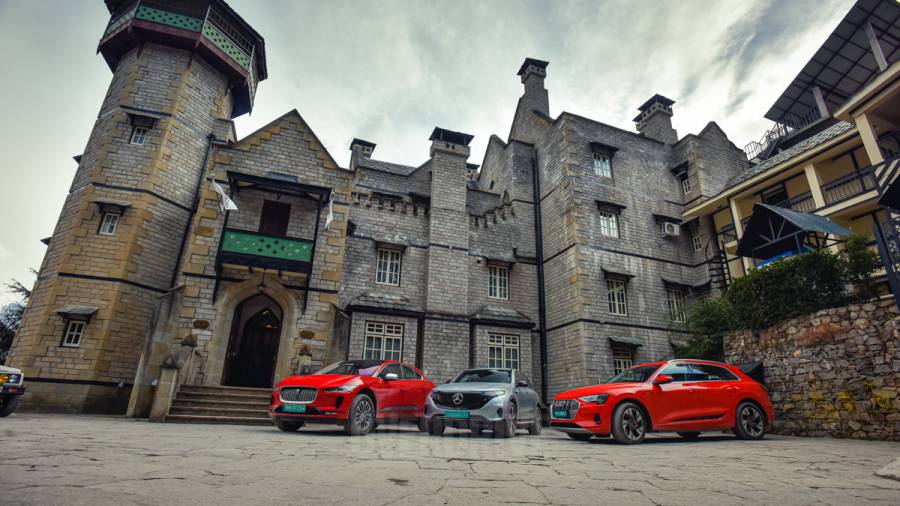
As it happens, the biggest deterrent for most people currently contemplating an EV purchase in India is the lack of exactly such infrastructure. Sure, the state-level subsidies have made it easier and led to quite a few players in this space, both from established firms like Tata Power as well as a swarm of new start-ups. But we think a more stringent set of operating targets could be specified by the government. This will mean more investment in manpower and equipment for these firms but the result will also be a far more straightforward and reliable charging experience for EV users.
Another point of note that emerged on this trip was Type 2 AC charging speeds. While the Lioncharge AC chargers we eventually used could supply up to 22 kW, the battery management systems in the e-tron and I-Pace only accept 11 kW. It's the same with the EQC, although this particular example hadn't received the latest software update and could only accept 7.4 kW. This disparity is due to EV's onboard chargers being rated at 11 kW, although we hope eventual software updates will cover this gap. In our case, it meant at least a 2.5-hour charge for each car to get the batteries up to around 70 per cent, enough to account for the battered roads and steep climbs in the Mandi to Manali section.
And road-tripping with three EVs that take anywhere between seven to eight hours to fully charge up on AC charging, or three to four hours for a significant top-up, brought to light another impending problem that will need some solving. Aside from faster chargers, more EVs will also bring them a need for multiple chargers at one location. Especially in areas where the electricity supply isn't robust enough for DC charging where fewer AC chargers could mean long wait times for users in the future. In our case, when we weren't driving them, we were charging the three SUVs, usually deep into the night. Getting out from your heated hotel room into -6 degree weather to charge a car in the middle of the night is far less adventurous than it sounds, and almost painful.
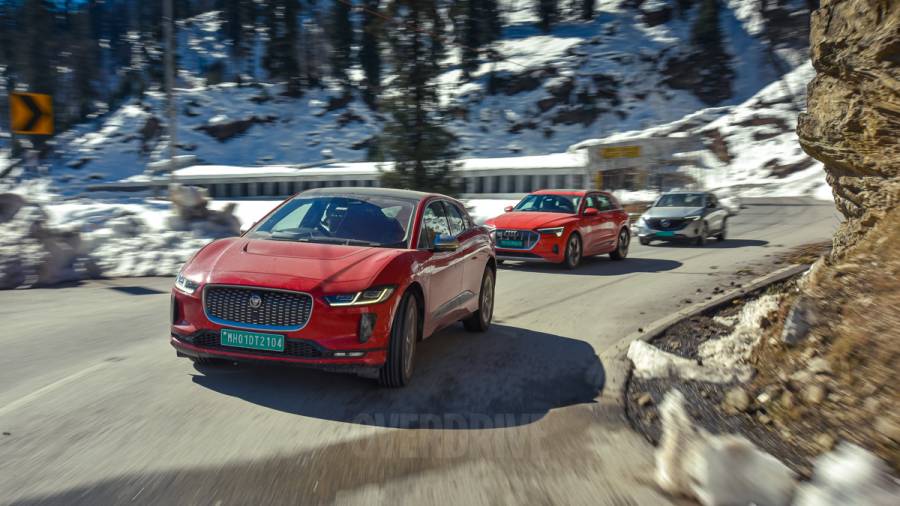
Audi e-tron vs Jaguar I-Pace vs Mercedes EQC driving impressions
The next time someone tells you electrification will turn cars towards some hell of homogeneity, you can safely call them out. The Audi e-tron, Mercedes EQC and Jaguar I-Pace may on paper be very similar, but each SUV brings with it a surprisingly unique take on an electric luxury car.
This also means that when you are hypermiling the way we were on this trip, you also had to change your driving style to suit each car. This may be down to how nascent a stage this power source is at, but it does make for interesting driving.
Take the e-tron for instance. It's the closest any of these three EVs get to their conventionally-powered equivalents in the way it feels. It looks like any other Audi on the outside, except for the requisite electric-themed light signatures and silver-painted body panels, and it's a reassuringly familiar feeling on the inside too. So the general theme and interfaces are exactly as you would find in say a Q7.
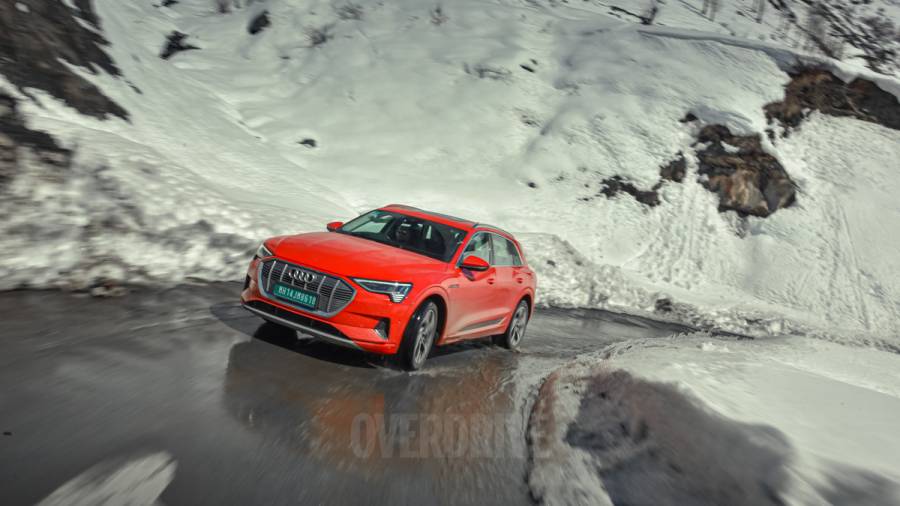
Even though the e-tron is based on a heavily modified MLB Evo architecture, Audi has been able to package in quite a bit of EV practicality with the large, open footwells and the wide and long cabin. The e-tron is also the closest to an ICE car in the way it drives. So there's no one-pedal driving, which means you only control acceleration with the right pedal, and the two levels of regenerative braking are controlled naturally through the paddle shifters. The sensation is very similar to engine braking, so the left paddle makes you feel like you are downshifting and the right like you are upshifting. And after some time behind the wheel, on the wide, flowing corners of the Solang Valley, using these paddles to shift from slowing down for corners and then coasting up for momentum comes quite naturally.
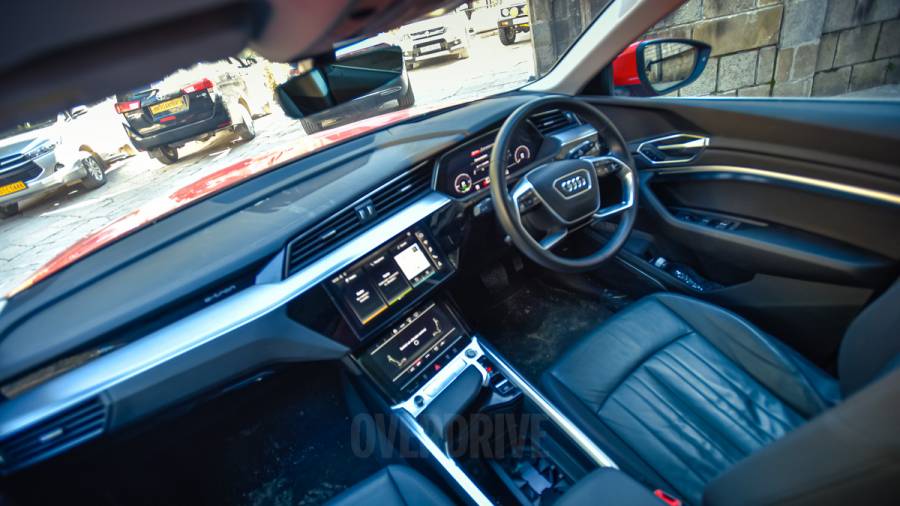
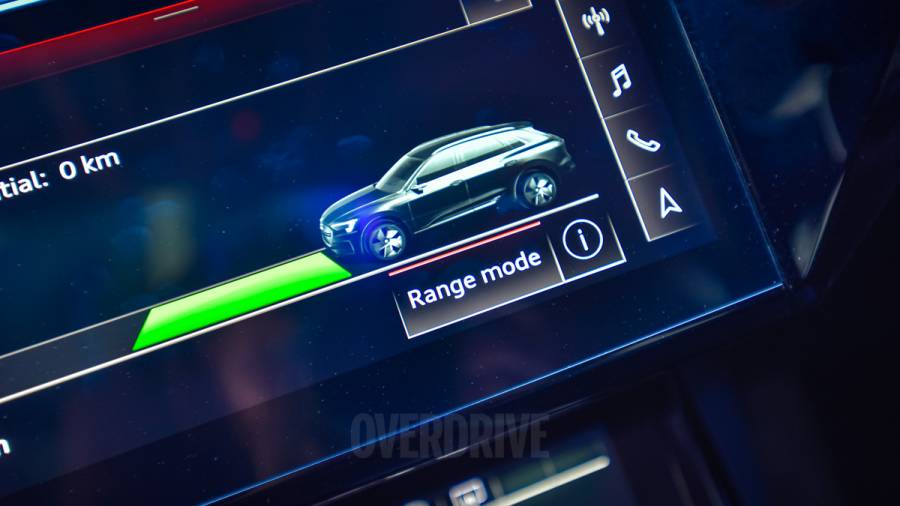
But the real life-saver with the Audi, especially on a long road trip, is the Range mode. Separate from the drive modes and buried deep in the menus, this significantly waters down the 400PS on offer and limits speed to 90 kmph. It'll also shut off the climate control, audio system and reduce screen brightness to maximise all the juice left in the batteries. There's a sizeable gain in range with this function, we saw up to 65 km, and the e-tron still has enough punch to not be a liability to drive. We only wish the charge level indicator wasn't as small as it is, given that the predicted range isn't quite as accurate as in the I-Pace.
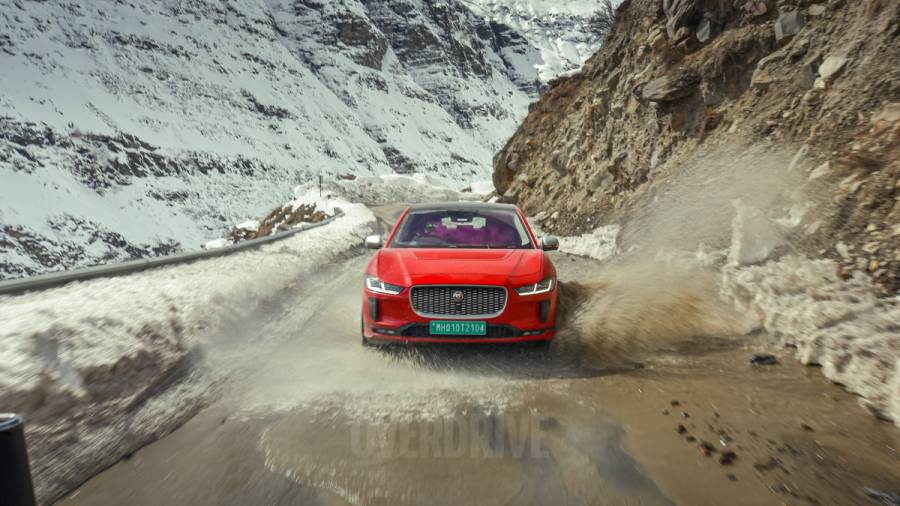
Speaking of the Jaguar, this quasi-SUV immediately made clear the benefits of a bespoke EV architecture. It looks like nothing else on the road with its coupe, hatch and SUV mashup styling and although the 90 kWh battery pack is marginally smaller than the Audi's 95 kWh but larger than the EQC's 80 kWh, the Jag is the most compact and the lightest at just over 2,200 kg. More importantly, it's rated for the highest range at 470 km WLTP. And while this may not seem all that much of an advantage over the e-tron's 441 km and the EQC's 420 Nm, the battery management system in the I-Pace is by far the most effective. In every situation, the I-Pace was more frugal than the other two SUVs but what stood out was its range indicator. The displayed range was exactly the distance the I Pace would go, with far fewer fluctuations than in other cars.
This heavily optimised architecture means that the I-Pace also takes the most getting used to. There are no paddles and you control the regen via the accelerator. This is effectively one-pedal driving, so you need to learn to finely modulate your right foot even further, a necessity on these EV road trips but even more in the case of the I-Pace.
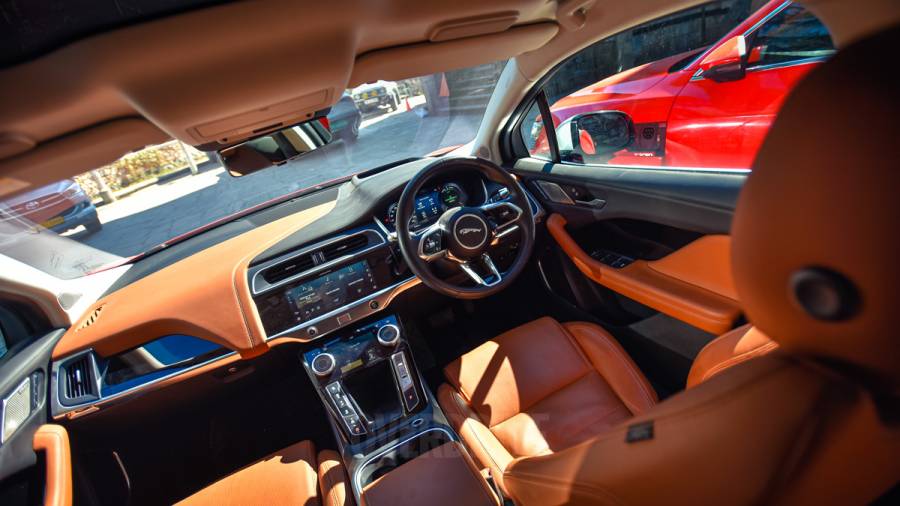
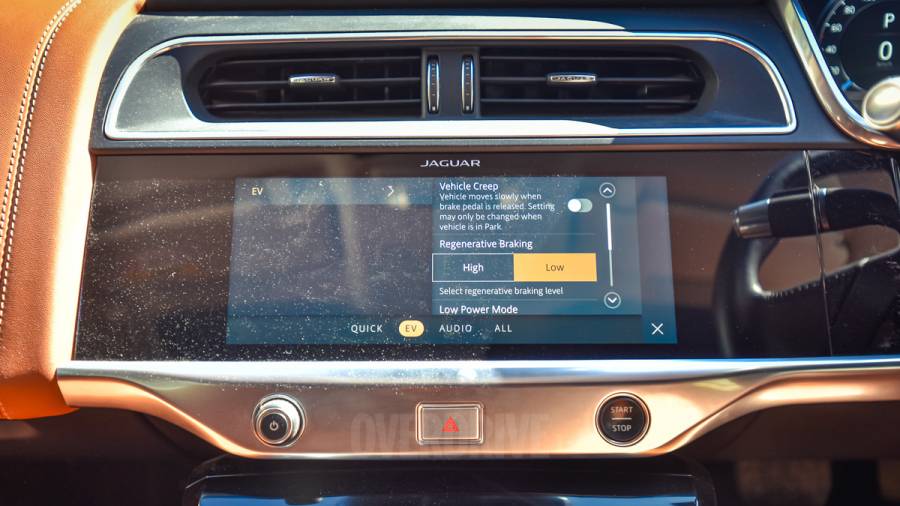
You get a similar low range mode as the Audi, but again this is buried even deeper in the infotainment and needs more than just muscle memory to engage. Truthfully, Jaguar could have done much better with the overall interior package and interfaces, especially in the company of the Audi and Mercedes.
Although if there is one car here that'll tug at an enthusiast's heartstrings, it's the Jaguar. The British carmaker has done very well to distil the experience of its brand into the I-Pace. It feels nimble and responsive on the move, with great sensations from the steering wheel. Again, the low range mode doesn't make it sluggish and without a lowered speed limit, the I-Pace is quite brisk even in this setting. It's the quickest of all the cars here despite a torque deficit to the EQC, with a 0 to 100 time of 4.8s.
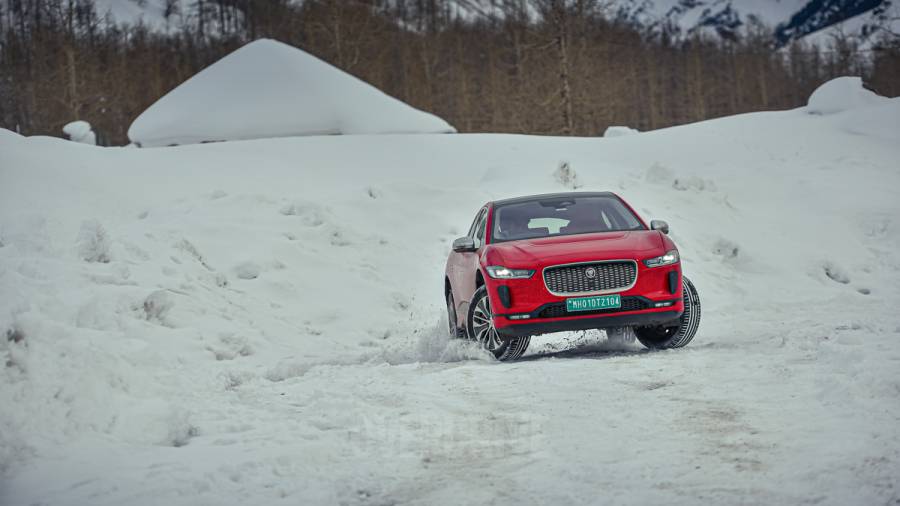
But genuinely surprising is its ability in the rough. Even with these 19-inch wheels, the Jaguar could quite happily pick its way through the worst of the Chandigarh-Manali highway in its off-road suspension setting, sections of which are now little more than off-road trails with the tunnelling work along the Beas river.
The EQC is exactly what it says on the tin, a Mercedes that just happens to be electric. It's effectively the electric version of the GLC and this brings with it some advantages and drawbacks. The good bits are that you have that same degree of sophistication in the cabin with the techy screens and the rich copper-highlighted materials and finishes. The switchgear and controls also have the same heft and fluidity to them as any other Mercedes. In fact, the EQC's dedicated energy consumption screens are especially informative, showing the consumption from various aspects of the car like the drivetrain and other functions.
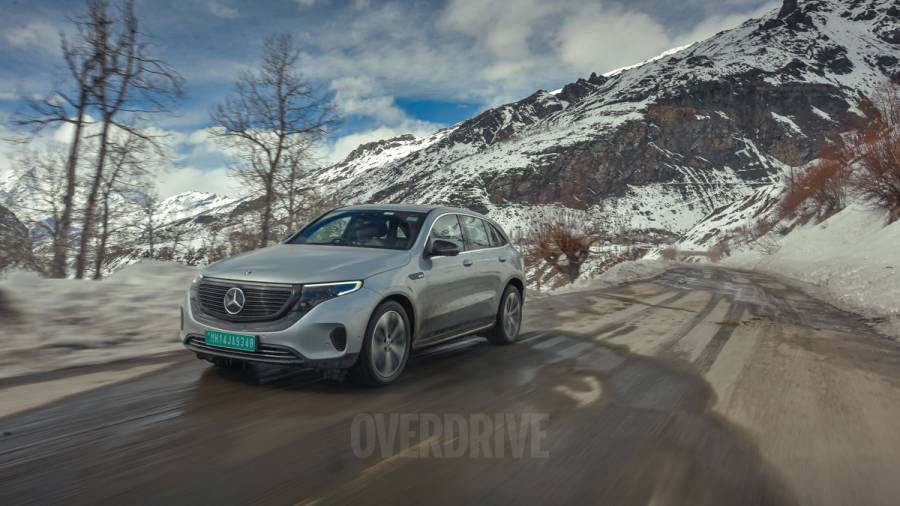
This becomes even handier than usual because the EQC doesn't get a dedicated energy saver mode like the other two SUVs here, at least in the India-spec car. So you need to manually turn off the climate control, reduce display brightness and so on. And while the Mercedes is as brisk and solid on the move as the other two, the reworked architecture has brought with it some drawbacks. The most apparent of these is the quite low ground clearance which will have you tip-toeing over large speed breakers or undulating broken sections of road. There's also quite a stiff edge to the ride, so on broken services, you can get thrown around a bit more than you would like in a Mercedes.
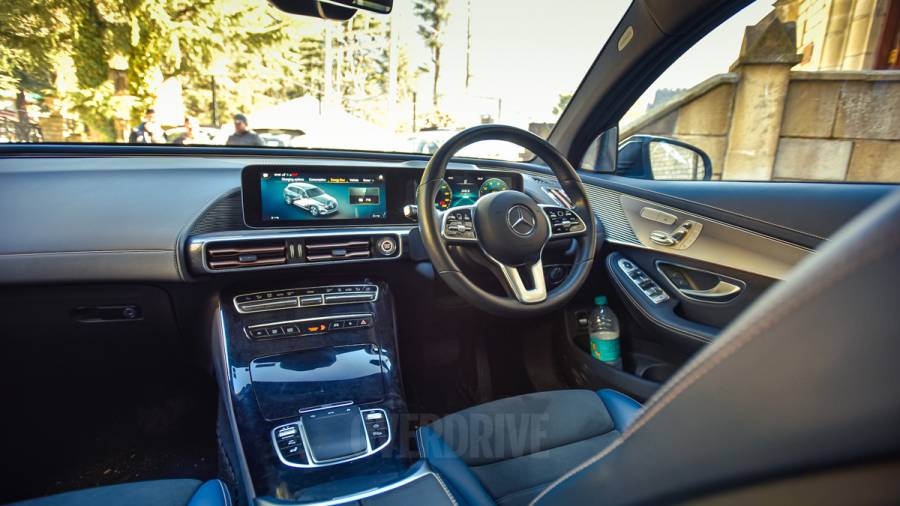
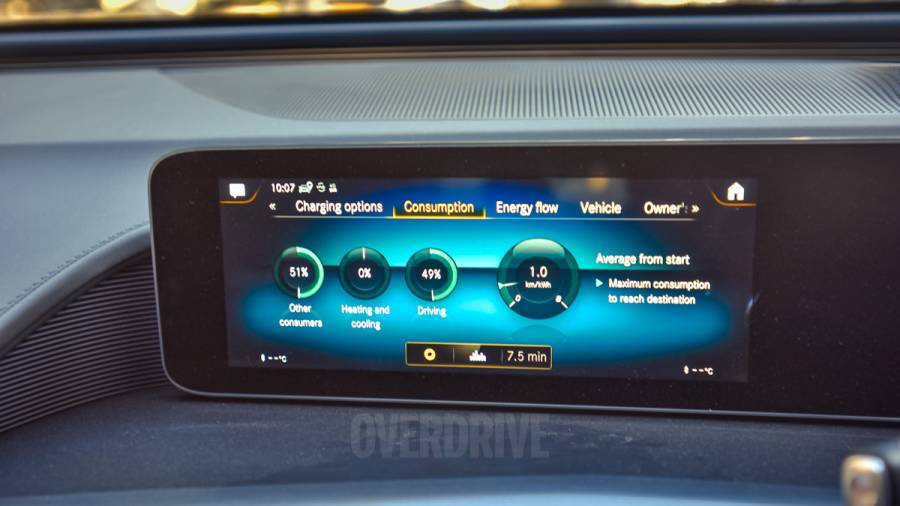
But these inconveniences become more palatable if you use the EQC as a largely urban commuter. It's quite conventional to drive, with the paddle operated regen mode giving you the same control as the e-tron. The Mercedes goes further by offering three levels of regen, the regular D mode will still decelerate the car much like a regular SUV off-throttle, with the D+ mode fully disconnecting the drivetrain from the wheels for coasting.
But it must be said that if you want to draw attention to your green credentials, the EQC does it better than any of the other SUVs here. That dinner-plate-sized star on the front is an immediate draw while the smooth bodywork and the crisp lighting give it an almost neo-retro sci-fi vibe that's hard to not appreciate.
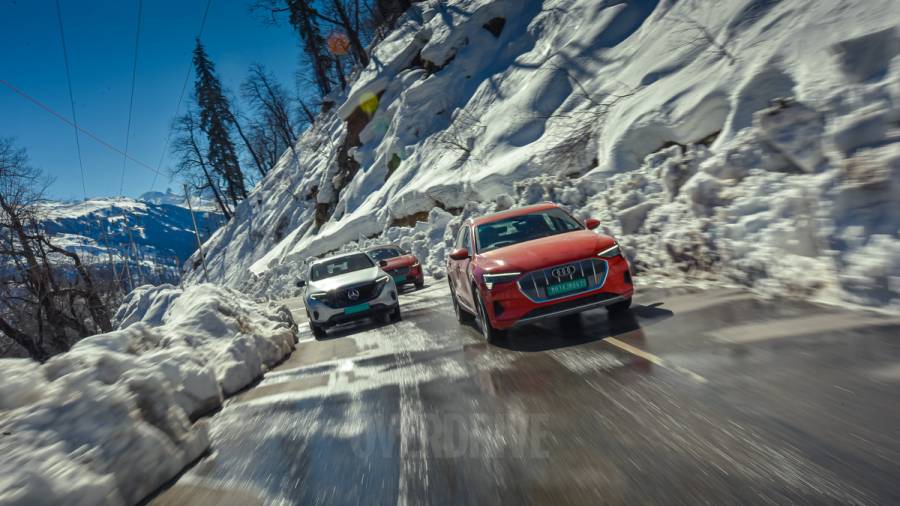
Audi e-tron, Jaguar I-Pace, Mercedes EQC cold-weather range, driving
With the benefit of hindsight from our previous EV trip to the mountains, we were much better equipped this time around to manage our range. Even with three SUVs to top-up every time. This also meant that once we reached Manali, we were could actually spend some time experiencing the spectacular winter landscapes around this place.
The Solang Valley was completely transformed from a few months ago. Past the hive of winter sports activities that this region is known for, the rolling greens had now turned into something out of an Alpine Bond scene. The entire landscape blanketed under a few feet of snow, this soothing landscape also proved to be the most challenging for our EVs.
Having left the Himalayan with about 40 to 50 per cent charge in all the EVs to reach our eventual destination past the Atal Tunnel in Sissu, it became clear that the time-tested automotive principles of lightness and sound engineering continue to hold with EVs.
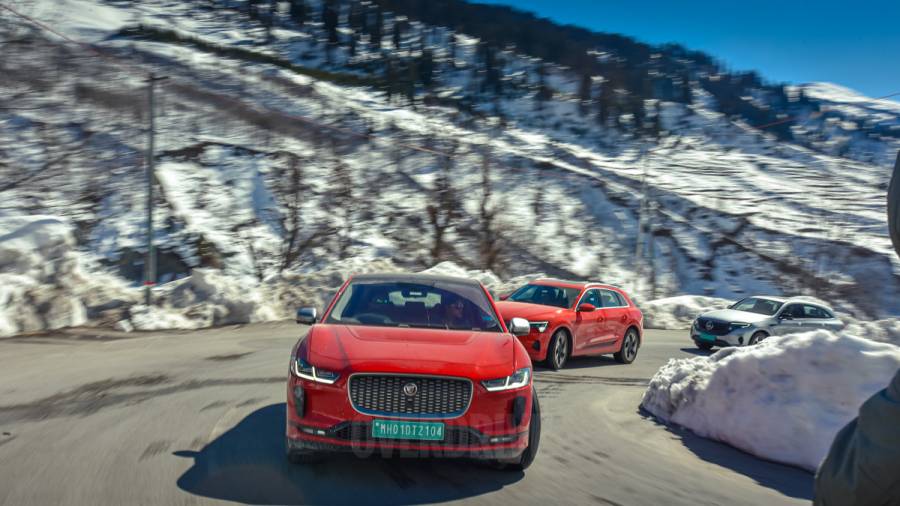
The steep climb wasn't going to be kind to any of the SUVs here, but again the I-Pace was the most reassuring. The range counter was very accurate in predicting how far we could go, which meant we could plan our driving better and be far less anxious. The EQC, with the smallest pack, had the least absolute range here, a situation that compounded itself right from the beginning of our drive, but it did manage to hold on to charge levels better than the Audi. The e-tron seemed most affected by the sub-zero climate and steep inclines, losing close to a 100km of range on the steady 40km drive up to Sissu.
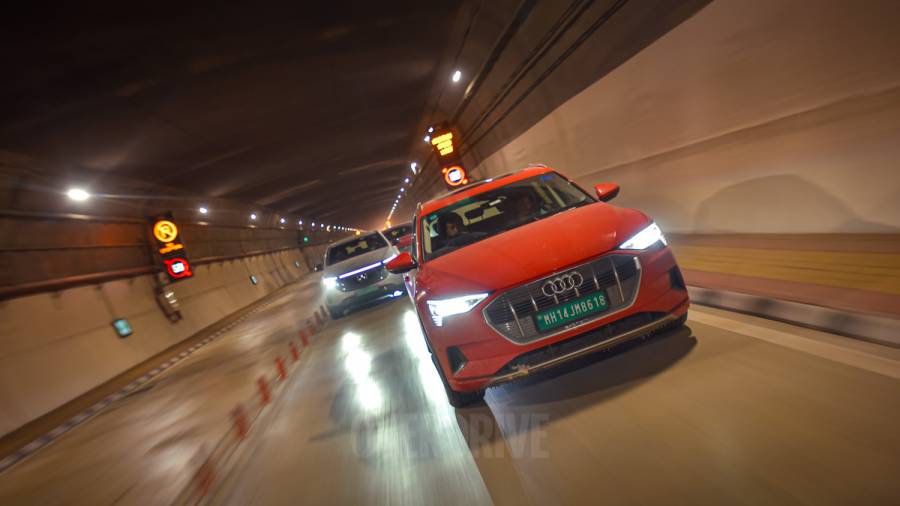
But some more hypermiling later, all three SUVs did get past the Atal Tunnel. The complete transformation of the landscape out of this tunnel is probably one of the more gratifying views you can experience in our country, and here too the barren rocky higher Himalayas had more striking scenery to offer. The peaks were taller and more ragged and the snowbanks along the road even higher, but the BRO does a great job to maintain these roads even in the winter and aside from a few patches of black ice, our eventual stop was a gratifying moment. Enough to make the late nights and tight planning worth the trouble. At 10,000 ft up, a wide bend in the road overlooked the frozen-over Chenab, with the Lahaul valley and its snow-covered peaks in the backdrop.
On the upbeat drive back, the e-tron and the EQC redeemed themselves quite well. The steep descent lets you harvest a significant amount of energy and the paddle-operated regen programs are just what you need to exploit this. Unlike in the I-Pace where the low regen mode is your best bet to maintain momentum and earn back the charge, the Mercedes and Audi let to maximize this. You can slow down more aggressively for a corner with the paddles and then speed up to coasting without really needing to touch the throttle, and sometimes even the brakes. This means that we managed to earn back up to half the energy we spent on the way up.
In sheer numbers, the Jaguar I-pace tackled the steep climb and the cold weather the best. Although all three EVs saw a massive dip in their range when compared against their WLTP numbers or in our tests in more suitable conditions. The e-tron returned 0.36 kW/km, the EQC 0.35 kW/km and the I-Pace needed 0.32 kW/km. This meant a theoretical range of 281 km from the Jaguar, 263 km for the Audi and 228 km in the Mercedes.
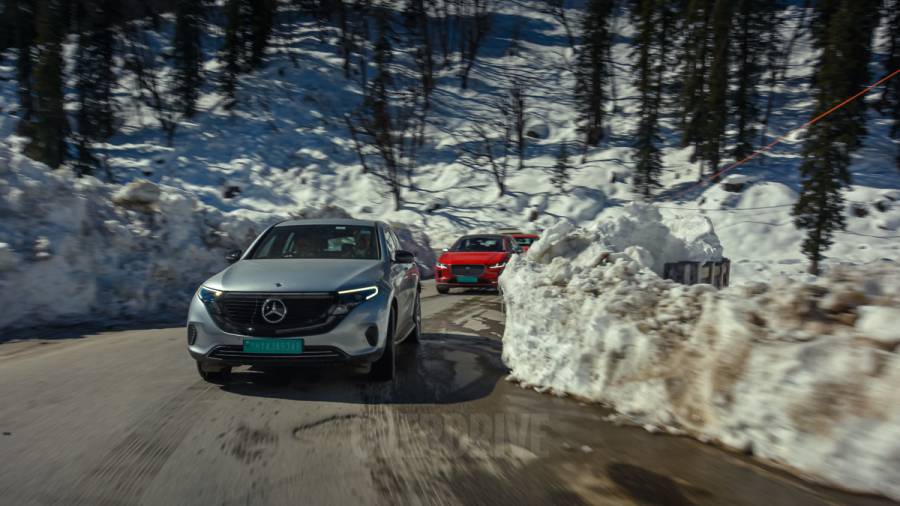
While the Jaguar makes clear the importance of weight and a good battery management system, the e-tron and the EQC also show the importance of a well-executed regen function. The paddle operated system in these SUVs helped them regain quite a bit of range, bridging the gap to the I-Pace. Also clear is the importance of battery capacity, the e-tron and EQC are nearly as efficient as the other, the EQC losing out on range largely due to its smaller battery.
As for the earlier part of our journey, it was the I-Pace again that managed expectations best. We never saw it get close to the 470 km WLTP range but the battery management system seemed to be the most consistent and realistic with its predictions. In fact, the Jaguar could have done the entire Chandigarh to Manali section without a charging stop, considering we topped up from 50 to 73 per cent at Mandi and reached the Himalayan with 48 per cent still left.
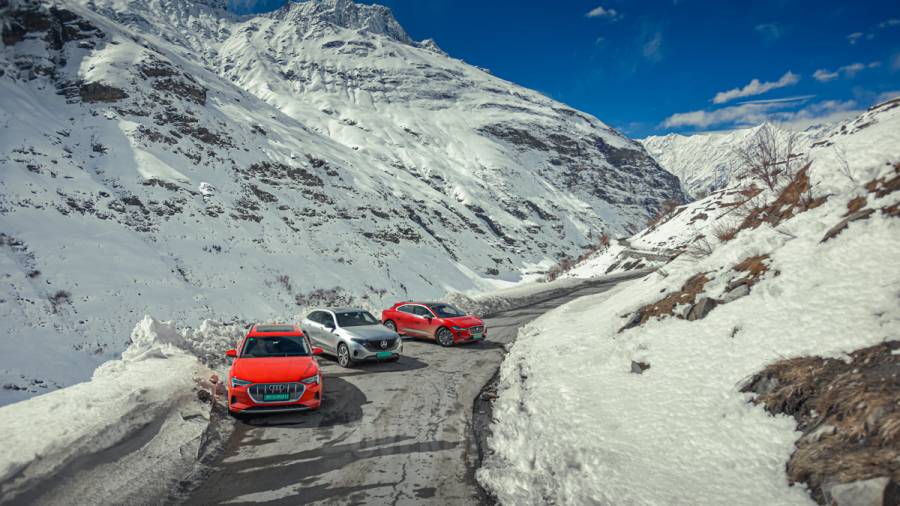
The e-tron is the most optimistic with its range predictions, the range indicator starting closest to its WLTP figure. So on our drive which included charge-sapping highway driving, ghat sections, broken patches and some traffic, the range could fluctuate the most out of the three. But you get used to this quickly enough, and if anything, this makes you drive more mindfully on a long trip such as this, eventually turning out be helpful.
The EQC finds itself in the middle when it comes to managing range. With its smaller battery pack, it can't quite match the others in all-out range. But the range counter is also more trustworthy than in the e-tron which means that you can plan trips better. We think the best way to get around the smaller battery is to make more, shorter duration stops which may not get to you to a high charge level but will get you to your destination in as much time as the other two SUVs here.
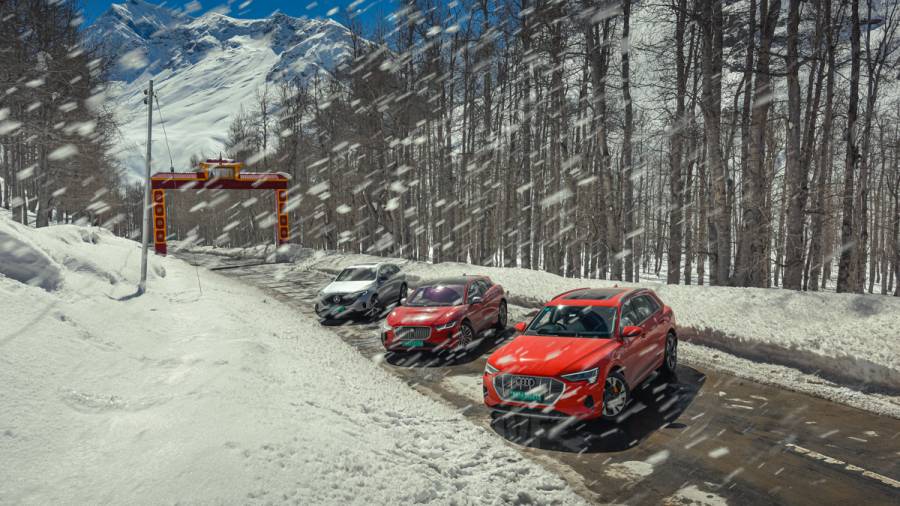
Can you road trip an EV in India?
While the basic premise may have been the same as our earlier trip to Leh, this trip was insightful in a completely different way. You can road trip an EV in India, especially in the more developed parts of our country. There's still more work to be done before an EV can be your do-it-all car though, for work or leisure. And you will need to just become a better driver till that happens.
But what was more enlightening is the way car-makers are approaching this solution. A lot of thought seems to be going into making this transition as smooth for owners as possible. The e-tron does it by keeping things as familiar as possible while the Mercedes focuses on what its brand does best, a genuine sense of luxury. The I-Pace on the other hand reinvents its brand to fit into the new order. Either way, it looks like you and I will be breaking further ground with the cars we drive going forward.
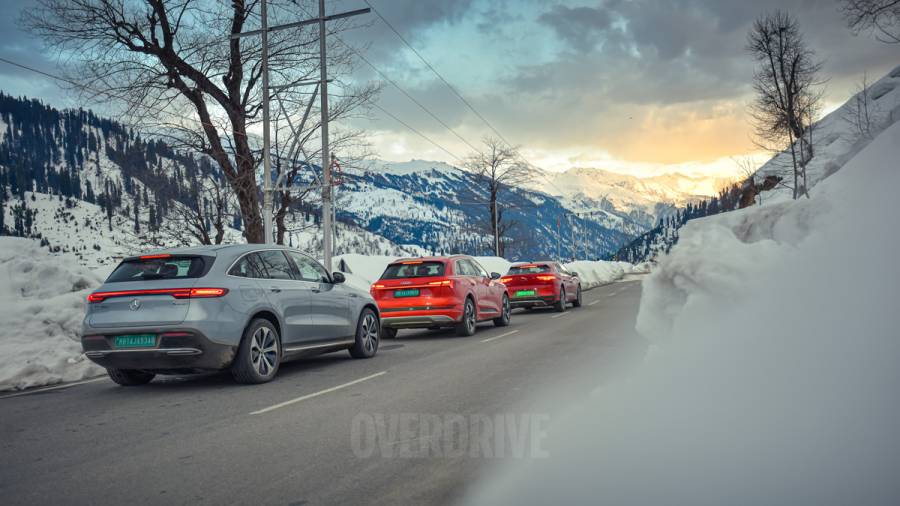
Audi e-tron vs Jaguar I-Pace vs Mercedes EQC real-world range, winter range, specifications
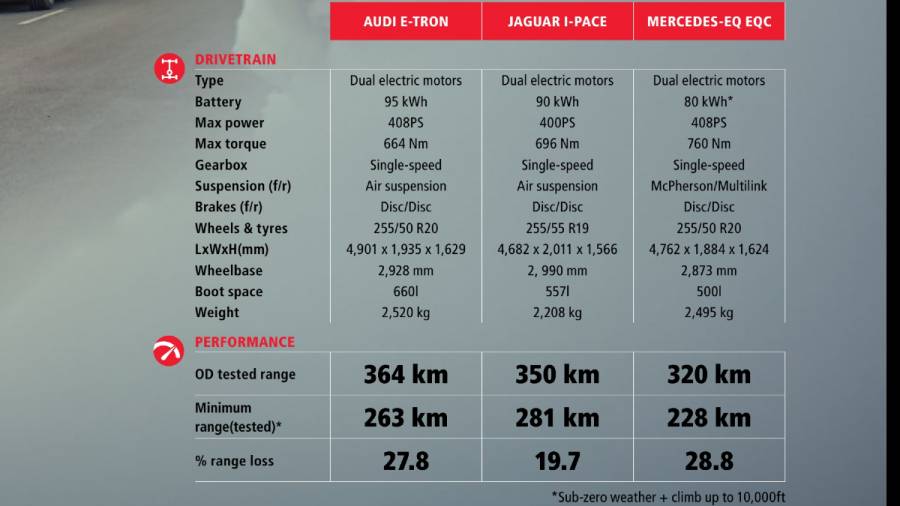
Images by Anis Shaikh
Watch our video story of this feature below,
Also read,
Electrifying Ladakh with the Audi e-tron
2021 Audi e-tron 55 road test review
2021 Jaguar I-Pace road test review
2020 Mercedes-Benz EQC first drive review
Starts Rs 1.05 Crore
-NA-
400
696
-NA-
Starts Rs 99.99 Lakhs
-NA-
Automatic
317
664
-NA-
